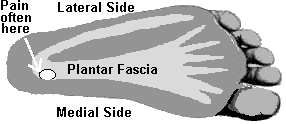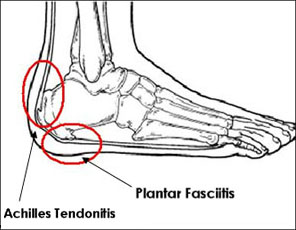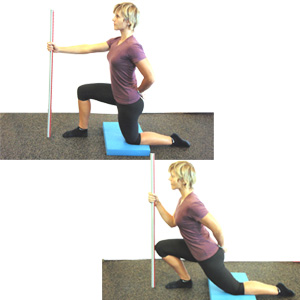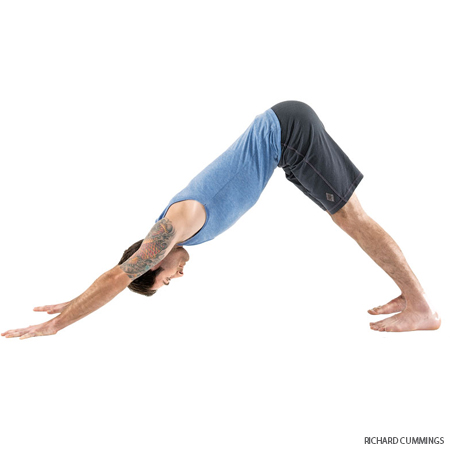Do you dread walking in the morning because of heel pain (especially in the first few steps)? Is your heel pain slowing you down? You are most likely dealing with a condition called plantar fasciitis, which affects up to 2 million Americans each year. This is staggering but I believe will rise due to social norms and habits. Fortunately, this condition is manageable with patience and the right course of care. It is important to understand the mechanics of our foot to heel thy pain. Read “The Secret to Moving Well and Performing Like a Professional (Instructions on Feet Care)” to appreciate the complexity of what you are feeling every step you take.
 Plantar fasciitis is described as an irritation to the plantar fascia. A bone spur is common to see in a x-ray with this condition. The origin or root of this plantar fascia at the heel is where you should feel the most pain upon poking to it. The collection of morning pain, pain with poking to the heel, and positive Windlass Test confirms this
Plantar fasciitis is described as an irritation to the plantar fascia. A bone spur is common to see in a x-ray with this condition. The origin or root of this plantar fascia at the heel is where you should feel the most pain upon poking to it. The collection of morning pain, pain with poking to the heel, and positive Windlass Test confirms this  condition. The simplified description of the Windlass Test is pain upon pulling your big toe back in sitting or standing. The saying I tell my patient is that the easy part is diagnosing it, the hard part is managing it due to the complexity of our foot design.
condition. The simplified description of the Windlass Test is pain upon pulling your big toe back in sitting or standing. The saying I tell my patient is that the easy part is diagnosing it, the hard part is managing it due to the complexity of our foot design.
The treatment strategies talked about later in this post can be loosely applied to Achilles tendinitis. Which is causing your irritation to the Achilles tendon located behind the heel? To confirm the diagnosis of Achilles tendonitis check if you have pain when you stretch your calves, tippy toe, and when you poke at the back of your heel (where the Achilles Tendon meets the heel). You may notice a bump to this region called a Haglund’s deformity.
There is one common public misunderstanding that is important to address before I proceed; the root of the problem is NOT the heel spur, but the tension that caused it. Spurs occur all over our body at places of high tension. If this tension is not matched by muscle support, our body will protect it by laying down bone. The key is to address the tension and not the spur (at least in the long run).

If you have been dealing with chronic pain and have both heels bothering you or want to manage it the right way from the beginning, then understanding our fascia line is important. Muscle helps us to move. Muscles are connected through our fascia in a track like a manner. This track/line allows us to generate greater force because of the group mentality. We transmit force and is more energy efficient this way like how a whip is used. The plantar fascia and Achilles tendon is connected up to our hamstrings, low back, and head/neck. If you have issues along this track, this will dampen the force transmission and overpull to the areas within this line. Our arch is commonly a weak link within the system, and the higher chance of irritation and developing the heel spur. The issue is not the spur but the way we use our body.
Self Treatment Strategies (In Order Of Importance)
1. Stretch your calves complex. Having a limited range of motion to your ankle joint is a proven RISK FACTOR for having plantar fasciitis….so let’s get rid of what makes you at risk first.
 Test: Kneel down and hold a stick 5″ away from your 2nd toe. Normal is to touch your (middle) knee to the stick without your heels lifting.
Test: Kneel down and hold a stick 5″ away from your 2nd toe. Normal is to touch your (middle) knee to the stick without your heels lifting.
Treatment: Grab a belt (like from your bathrobe) and tie it around your (front leg) ankle to your kneeling (back leg) knee firmly. Using your hand (both if you have good balance), grab your shin bone and give it a good “skin burn-like” twist inwards. Hold that twist and lean forward like the test itself. If

you get more motion WITHOUT pain, repeat 10 times, twice a day. Repeat until you passed the test.
Exercise: Downward dog yoga pose to address the superficial back line. Breath deeply into your lower back and stomach. Hold 15-20 seconds and repeat. Do this daily and don’t give up until you can touch your toes.

2. Push your heel. In the first article, I mentioned that the heel dictates arch function (hence stability and stress to the plantar fascia). Many times, people stretch the ankle and arch but forget the heel joint itself. Follow the picture and push your heel down towards the floor. Hold for 10 seconds and repeat 10 times. Repeat daily until you feel movement. Recheck from time to time.
3.Pelvic floor self-massage. Sit on a tennis ball and place it between your testicle/vagina and anus. Search for any tender spots and sit on it. Breath into the ball. Repeat for 60 seconds. This should not result in any numbness and tingling. You may experience sharp and discomfort but that is usually due to the need for work to the pelvic floor muscle.
4. Arch strengthening exercise. This will support your arch via your muscle system. If you have a tendency to overgrip with your toes, then you need this even more. Sit and spread your toes apart as wide as you can. Gently press your big and little toe down into the ground. Hold for 30-60 seconds. Repeat. Cramping initially is common as you wake up these muscles.
5. Straight Leg Raise. Lay on your back. Keep your knee tight and straight. Raise one leg up to 90 degrees if possible. Alternate to the other leg. Repeat 20-30 times. You should feel your hamstrings stretching and your abdominals working, NOT your front thigh or groin. This should loosen up your superficial back line.
6. Address any lower back or neck issues. Read “Hidden Causes of Nagging Neck Pain” for neck care guidelines. Read “Catch-a-Lumbago” for general low back care.
7. Improve on your single leg balance. Normal is to not sway as you stand on one leg for 30 seconds. Challenge with your eyes closed. Be responsible. If you feel unsafe then have someone nearby.
If you are dealing with heel or any other pain and need a second opinion or consultation, please email us at revitalizerehab@gmail.com. We would love to help you in any way possible to get you back on the right side of your feet. We also provide 1-on-1 fitness programming. If you know anyone who is interested in losing weight or dealing with pain, please share our website.
